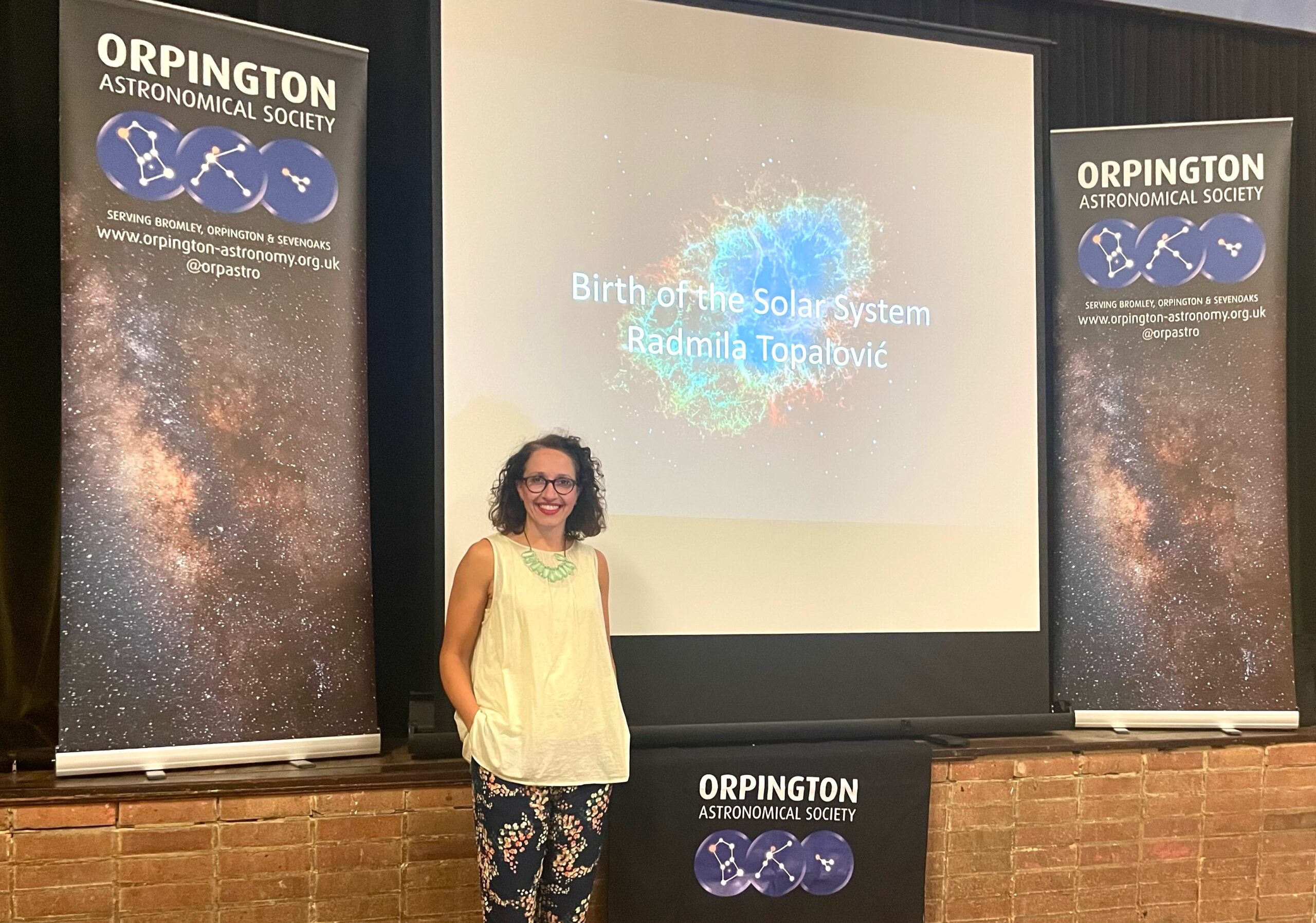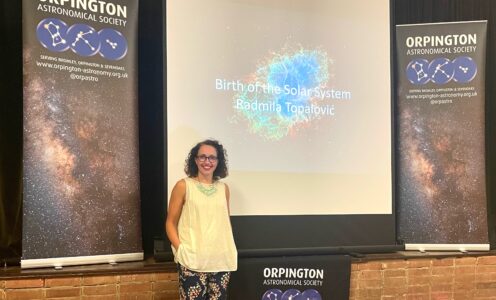Are we unique in the universe?
Our speaker on Wednesday 27 July, Dr Radmila Topalović, posed the question during her fascinating review of how our solar system came into being, entitled The Birth of the Solar System. Starting with the tiny discontinuities that have been found in the cosmic background radiation (CBR) maps, Dr Topalović described how this evidenced the instabilities which led to swirling clouds of gas and (later) dust which grew over millennia to form pockets of gravitational mass.
Some of these grew large enough to create Jupiter-like balls of gas, some continued to grow and form brown dwarfs, with insufficient gravitational pressure to sustain a nuclear fusion reaction.
So far so similar, but then the mass required to sustain the fusion reaction was critical – also having sufficient nearby gas and dust to create an accretion disc from which planets could form. Dr Topalović explained that formation of planets was not a forgone conclusion – a relatively short window of 10 million years held the right conditions for them to appear. Then there was the high risk that Jupiter would fall into the sun, a risk overcome by the gravitational pull of Saturn. Finally the “migration” of Jupiter and Saturn towards the sun, followed by a recoil to their present orbits, meant that our four “rocky planets” could form in the way they did, which led to a distribution of planets in our solar system which so far appears unique amongst the planetary systems so far discovered.
Dr Topalović’s mixture of hard science and informed speculation was illustrated by a series of brilliant images (all shown to great effect on the Society’s latest projection system)
• Andrew Ramsay


